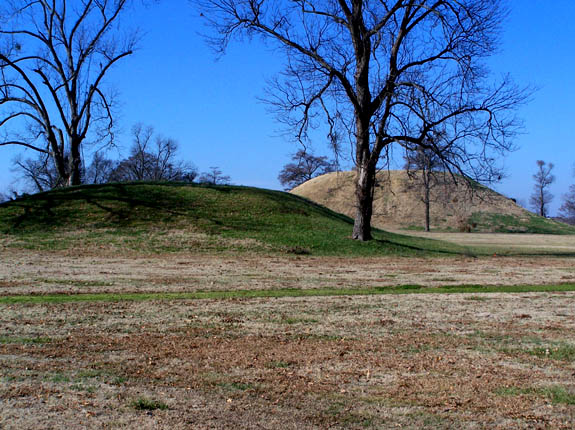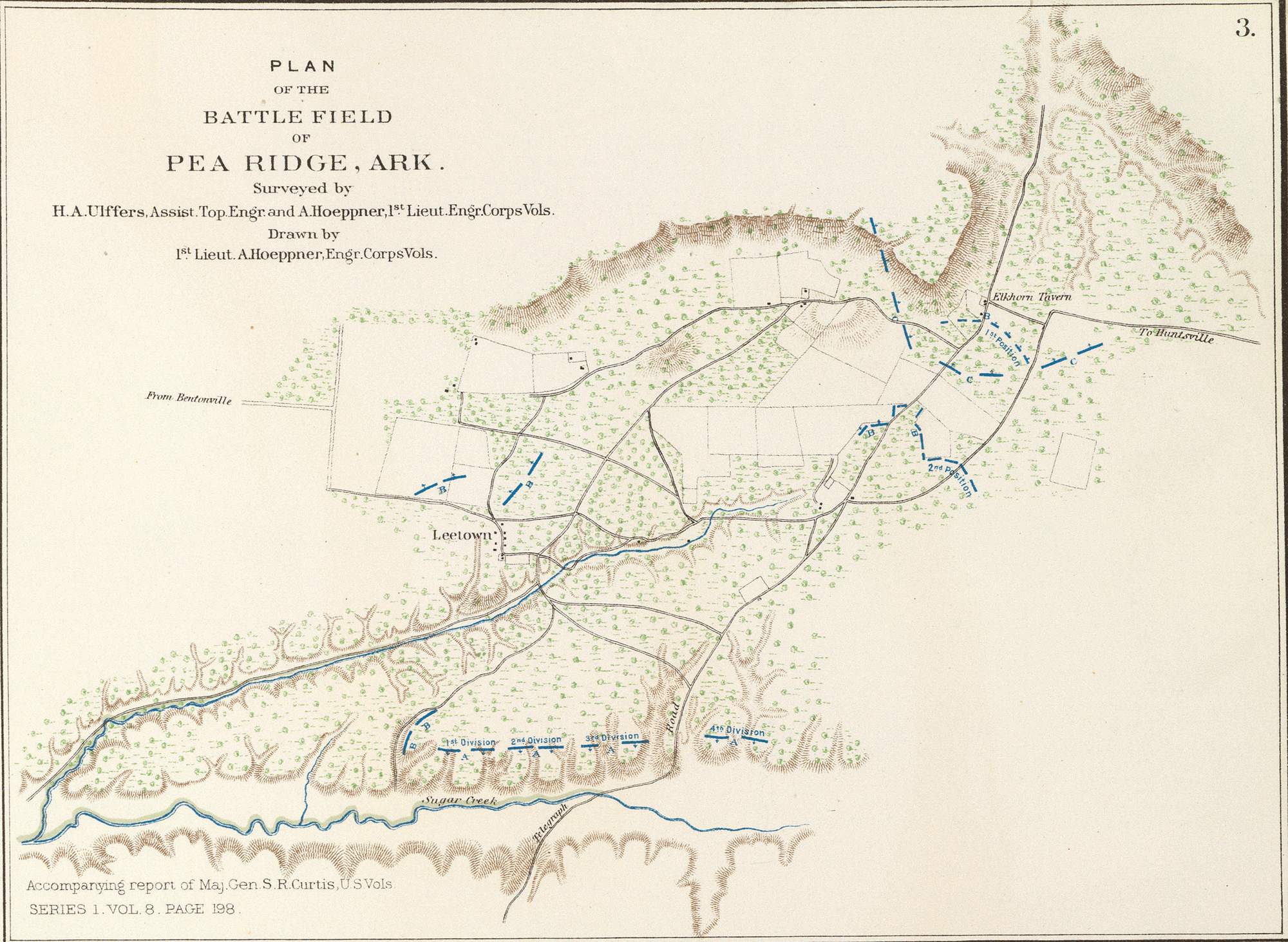|
Battle Of Pilot Knob
The Battle of Fort Davidson, also known as the Battle of Pilot Knob, was a battle of Price's Missouri Expedition fought on September 27, 1864, near Pilot Knob, Missouri. Confederate troops under the command of Major-General Sterling Price had entered Missouri in September 1864 with hopes of challenging Union Army, Union control of the state. On September 24, Price learned that Union troops held Pilot Knob. Two days later, he sent part of his command north to disrupt and then moved towards Pilot Knob with the rest of his army. The Confederate divisions of Major-General James Fleming Fagan, James Fagan and Brigadier-General John S. Marmaduke, John Marmaduke drove Union troops under Brigadier-General Thomas Ewing Jr., Thomas Ewing and Major James Wilson from the lower Arcadia Valley into Fort Davidson on September 26 and on the morning of September 27. On the afternoon of the 27th, Price aligned troops around Fort Davidson in order to attack it from multiple sides. While inten ... [...More Info...] [...Related Items...] OR: [Wikipedia] [Google] [Baidu] |
American Civil War
The American Civil War (April 12, 1861May 26, 1865; also known by Names of the American Civil War, other names) was a civil war in the United States between the Union (American Civil War), Union ("the North") and the Confederate States of America, Confederacy ("the South"), which was formed in 1861 by U.S. state, states that had Secession in the United States, seceded from the Union. The Origins of the American Civil War, central conflict leading to war was a dispute over whether Slavery in the United States, slavery should be permitted to expand into the western territories, leading to more slave states, or be prohibited from doing so, which many believed would place slavery on a course of ultimate extinction. Timeline of events leading to the American Civil War, Decades of controversy over slavery came to a head when Abraham Lincoln, who opposed slavery's expansion, won the 1860 presidential election. Seven Southern slave states responded to Lincoln's victory by seceding f ... [...More Info...] [...Related Items...] OR: [Wikipedia] [Google] [Baidu] |
Slavery In The United States
The legal institution of human chattel slavery, comprising the enslavement primarily of List of ethnic groups of Africa, Africans and African Americans, was prevalent in the United States of America from its founding in 1776 until 1865, predominantly in the Southern United States, South. Slavery was established throughout European colonization in the Americas. From 1526, during the early Slavery in the colonial history of the United States, colonial period, it was practiced in what became British America, Britain's colonies, including the Thirteen Colonies that formed the United States. Under the law, an enslaved person was treated as property that could be bought, sold, or given away. Slavery lasted in about half of U.S. states until Thirteenth Amendment to the United States Constitution, abolition in 1865, and issues concerning slavery seeped into every aspect of national politics, economics, and social custom. In the decades after the end of Reconstruction era, Recons ... [...More Info...] [...Related Items...] OR: [Wikipedia] [Google] [Baidu] |
Guerrilla Warfare
Guerrilla warfare is a form of unconventional warfare in which small groups of irregular military, such as rebels, partisans, paramilitary personnel or armed civilians, which may include recruited children, use ambushes, sabotage, terrorism, raids, petty warfare or hit-and-run tactics in a rebellion, in a violent conflict, in a war or in a civil war to fight against regular military, police or rival insurgent forces. Although the term "guerrilla warfare" was coined in the context of the Peninsular War in the 19th century, the tactical methods of guerrilla warfare have long been in use. In the 6th century BC, Sun Tzu proposed the use of guerrilla-style tactics in '' The Art of War''. The 3rd century BC Roman general Quintus Fabius Maximus Verrucosus is also credited with inventing many of the tactics of guerrilla warfare through what is today called the Fabian strategy, and in China Peng Yue is also often regarded as the inventor of guerrilla warfare. Guerrilla wa ... [...More Info...] [...Related Items...] OR: [Wikipedia] [Google] [Baidu] |
Arkansas
Arkansas ( ) is a landlocked state in the West South Central region of the Southern United States. It borders Missouri to the north, Tennessee and Mississippi to the east, Louisiana to the south, Texas to the southwest, and Oklahoma to the west. Its name derives from the Osage language, and refers to their relatives, the Quapaw people. The state's diverse geography ranges from the mountainous regions of the Ozark and Ouachita Mountains, which make up the U.S. Interior Highlands, to the densely forested land in the south known as the Arkansas Timberlands, to the eastern lowlands along the Mississippi River and the Arkansas Delta. Previously part of French Louisiana and the Louisiana Purchase, the Territory of Arkansas was admitted to the Union as the 25th state on June 15, 1836. Much of the Delta had been developed for cotton plantations, and landowners there largely depended on enslaved African Americans' labor. In 1861, Arkansas seceded from the United St ... [...More Info...] [...Related Items...] OR: [Wikipedia] [Google] [Baidu] |
Battle Of Pea Ridge
The Battle of Pea Ridge (March 7–8, 1862), also known as the Battle of Elkhorn Tavern, took place during the American Civil War near Leetown, Arkansas, Leetown, northeast of Fayetteville, Arkansas, Fayetteville, Arkansas. United States, Federal forces, led by Brig. Gen. Samuel Ryan Curtis, Samuel R. Curtis, moved south from Mid-Missouri, central Missouri, driving Confederate States of America, Confederate forces into northwestern Arkansas. Maj. Gen. Earl Van Dorn had launched a Confederate counter-offensive, counteroffensive, hoping to recapture northern Arkansas and Missouri. Confederate forces met at Bentonville, Arkansas, Bentonville and became the most substantial Rebel force, by way of guns and men, to assemble in the Trans-Mississippi theater of the American Civil War, Trans-Mississippi. Against the odds, Curtis held off the Confederate attack on the first day and drove Van Dorn's force off the battlefield on the second. By defeating the Confederates, the Union forces e ... [...More Info...] [...Related Items...] OR: [Wikipedia] [Google] [Baidu] |
Confederate Government Of Missouri
The Confederate government of Missouri was a continuation in exile of the government of pro- Confederate Governor Claiborne F. Jackson. It existed until General E. Kirby Smith surrendered all Confederate troops west of the Mississippi River at New Orleans, May 26, 1865. History As the Civil War began, many leading citizens were hoping the state could remain neutral in the growing conflict. These hopes were encompassed in the so-called Price–Harney Truce of May 21, 1861. Implementation of the truce fell prey, however, to the growing conflict. At a meeting held at Planters' House in St. Louis, June 11, 1861, it became clear that leading Missourians would have to choose sides. In the fall of 1861, Governor Claiborne Jackson and other leading Missouri secessionists met in Neosho, Missouri. Acting as the Missouri General Assembly, this body enacted an ordinance of secession on October 28, 1861; however, the legal status of this ordinance was not accepted by Missou ... [...More Info...] [...Related Items...] OR: [Wikipedia] [Google] [Baidu] |
Missouri General Assembly
The Missouri General Assembly is the State legislature (United States), state legislature of the U.S. state of Missouri. The bicameral General Assembly is composed of a 34-member Missouri Senate, Senate and a 163-member Missouri House of Representatives, House of Representatives. Elections are conducted using first-past-the-post voting in Single-member district, single-member districts of roughly equal population. Members of both houses of the General Assembly are subject to Term limits in the United States, term limits. Senators are limited to two four-year terms and representatives to four two-year terms, a total of 8 years for members of both houses. The General Assembly meets at the Missouri State Capitol in Jefferson City, Missouri, Jefferson City. Polling from Saint Louis University showed that the General Assembly enjoyed a 45% approval rating in 2024, which was considered "relatively high" compared to other government institutions. Qualifications Members of the House of R ... [...More Info...] [...Related Items...] OR: [Wikipedia] [Google] [Baidu] |
Battle Of Wilson's Creek
The Battle of Wilson's Creek, also known as the Battle of Oak Hills, was the first major battle of the Trans-Mississippi Theater of the American Civil War. It was fought on August 10, 1861, near Springfield, Missouri. In August, Confederates under Brigadier General Benjamin McCulloch and Missouri State Guard troops under Maj. Gen. Sterling Price approached Brig. Gen. Nathaniel Lyon's Army of the West, camped at Springfield. On August 10, Lyon, in two columns commanded by himself and Col. Franz Sigel, attacked the Confederates on Wilson Creek about southwest of Springfield. Confederate cavalry received the first blow and retreated from the high ground. Confederate infantry attacked the Union forces three times during the day but failed to break through. Eventually, Sigel's column was driven back to Springfield, allowing the Confederates to consolidate their forces against Lyon's main column. When Lyon was killed, Major Samuel D. Sturgis assumed command of the ... [...More Info...] [...Related Items...] OR: [Wikipedia] [Google] [Baidu] |
Nathaniel Lyon
Nathaniel Lyon (July 14, 1818 – August 10, 1861) was a United States Army officer who was the first Union Army, Union General officer, general to be killed in the American Civil War. He is noted for his actions in Missouri in 1861, at the beginning of the conflict, to forestall secret secessionist plans of the governor Claiborne Jackson. He had fought in the Second Seminole War in Florida and the Mexican–American War. In 1850 he co-led the Bloody Island Massacre of 60–200 Pomo Native Americans in the United States, Native American old men, women, and children as part of the wider California genocide. Several days later, Lyon was responsible for another massacre in Cokadjal, killing 75 to 100 Native Americans, albeit the number was likely double. After being assigned to Kansas, where many residents were divided about slavery and the Union, he developed strong pro-Union views. In February 1861, Lyon was made commander of the Union arsenal in St. Louis in Missouri, another d ... [...More Info...] [...Related Items...] OR: [Wikipedia] [Google] [Baidu] |
Missouri State Guard
The Missouri State Guard (MSG) was a military force established by the Missouri General Assembly on May 11, 1861. While not a formation of the Confederate States Army, the Missouri State Guard fought alongside Confederate troops and, at various times, served under Confederate officers. Background The Missouri General Assembly passed the "Military Bill" on May 11, 1861, in direct response to the Camp Jackson Affair in St. Louis the previous day. The final version of the act approved on May 14 authorized the Governor of Missouri, Claiborne Fox Jackson, to disband the old Missouri Volunteer Militia and reform it as the Missouri State Guard to resist a feared invasion by the Union Army. It also outlawed or prohibited other militia organizations except those authorized by the Guard's district commanders. This was primarily aimed at preventing Unionist Missourians from organizing "Home Guard" companies in the areas outside the metropolitan St. Louis area. This prohibition includ ... [...More Info...] [...Related Items...] OR: [Wikipedia] [Google] [Baidu] |





